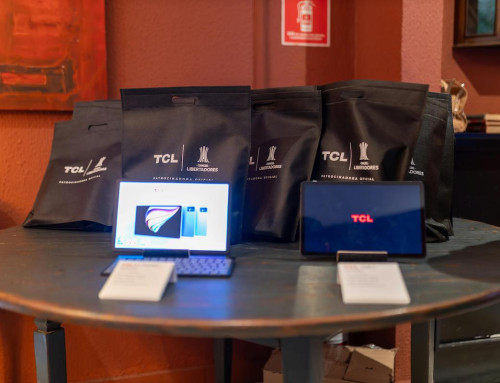What is HR’s role in an organization? This may seem like an easy question to answer, but the functions of human resource management can be difficult to narrow down. That is because this department handles so many different tasks associated with your most precious resource – your staff.
If you are looking for a way to help your HR team excel, you must first identify their different functions, and learn how they interconnect.
This breakdown of the 10 key functions of human resource management will guide you in understanding the multi-faceted role of the HR department. The article will also explain how a corporate community network like Aluminate for Enterprise will help streamline all HR processes.
10 key functions of human resource management
While their responsibilities may vary from one company to another, these 10 functions of human resource management highlight the most common roles that HR teams fill in an organization.
1. Talent recruitment and selection
One of the top functions of human resource management in any organization is the recruitment and selection of candidates for job openings. Thus, HR professionals shoulder the responsibility for your talent pool, from which all your crucial posts are filled.
This calls for an efficient talent management system (TMS) to handle everything from headhunting to management of the talent pool. A TMS that incorporates your corporate alumni network allows you to stay in touch with your corporate alumni and hire boomerang employees.
Aluminate for Enterprise is ideal for use as a talent management system and corporate community platform. It allows you to create and maintain powerful connections with your corporate alumni, making it easy to rehire them. Use it to encourage conversation, post company updates and job openings on the dashboard, and much more.
Including external stakeholders, such as your clients, customers, and suppliers, on your corporate community network will increase the talent pool HR can recruit from.
2. Onboarding processes
Any good HR manager knows that a positive onboarding experience helps with engaging employees from the start. Onboarding is the process of integrating the new hire into their new work environment. They become familiar with the workplace culture and learn more about what their role in it is.
However, onboarding is also meant to make a new employee feel welcome and a part of the team. That is why, regardless of your need to streamline HR processes in your company, you should never neglect the onboarding process.
Aluminate streamlines the onboarding experience for both your team and the new hires. Use the digital library feature to make resources like virtual training, tutorial videos, and essential documents, available to new employees. As the most customizable corporate community platform in the world, members will see content meant just for them.

3. Training and skills development
Without comprehensive employee training, all efforts at recruiting the best candidates are in vain. The HR team must also provide staff with adequate training and skills development.
Managing employees means nurturing their careers and helping them grow, not just in but also with the company. This is how HR managers identify the ideal candidates for succession planning, filling the void left when senior employees leave.
However, if they do leave, you can remain in contact with them on a corporate community platform like Aluminate. It is an all-in-one solution to building a community, engaging with your network, and offering training and skills development opportunities to your valued members.
4. Performance management
HR management is also tasked with keeping a watchful eye on employee performance. This could entail arranging extra training programs or mentoring for employees who are struggling. Employee performance management benefits both the employee and the organization.
Make this easier for your human resource department. On the Aluminate platform, the community builder allows you to easily match mentors to mentees for virtual mentoring sessions.
High-performing, productive employees increase efficiency and ultimately, profitability. This helps them to get ahead in the company, reaching their own career development goals more quickly. It is a win for everyone involved.
5. Compensation and benefits
HR manages everything to do with employees. That includes overseeing compensation and benefits. Many see this as the main purpose of HR, but employee compensation is only one factor.
There are other categories like recognition and rewards, that add value to an employee’s work experience.
Rewards do not have to be cash-based to boost employee motivation. The very act of giving recognition is enough to increase employee engagement and retention and boost employee morale.
Use a corporate social network like Aluminate to structure your recognition platform. You can use it to post individual or team accomplishments on the dashboard. This will also be your employees’ virtual meeting place, for virtual chats and peer-to-peer recognition.

6. Employee engagement and retention
HR managers are responsible for supplying the staff that will help an organization meet its business objectives. However, this mission does not end after the recruitment process. Keeping employees engaged is just as important as finding the right candidates in the first place.
Boost employee satisfaction within the workplace environment and their job roles, and you increase employee retention. You can build a positive workplace culture with a strong corporate community.
Start by establishing a network where your employees can communicate and collaborate freely. Our Groups feature allows employees to connect in spaces tailored to their interests or specific projects, by forming sub-communities within the greater community.
7. HR Information Systems (HRIS)
A human resources information system (HRIS) is whatever platform you use to manage and store your employee data, HR policies, and other relevant information.
This helps the entire HR team, and other management, to monitor developments within the workforce. The right HRIS software can have a significant impact on human resource planning. Aluminate for Enterprise can help here too.
Use it to provide both existing and new employees with a learning hub for diversity training programs, employee wellness programs, career development, employee health, and even tutorials on the latest labor laws.
8. Employee relations
Human resource managers are well aware that good employee relations are essential to employee satisfaction, and an overall happy and productive workplace. This is why managing employee relations is a large part of their daily responsibilities.
By ensuring that employees have the opportunity for open and honest employee communication and debate, you create a happier and more productive workforce. One that works well together, to achieve the company’s goals. An enterprise social network like Aluminate is the perfect foundation.

9. Employee feedback and surveys
The functions of human resource management also extend to gathering employee feedback, most often through surveys, but also in one-on-one meetings with employees. Surveys are usually the best way to discover grievances among the more timid employees.
Employee surveys can cover much more than just employee concerns. They are an effective measurement of engagement, but can also be used to gather recommendations from the workforce about the type of recognition they desire.
You can upload employee surveys onto Aluminate’s digital library, or share them on the digital dashboard. You can also gain employee feedback more casually by using the virtual chat feature on your corporate community platform. This will facilitate further open and productive communication between HR and employees.
This type of employee involvement is an act of recognition in itself. It gives employees a voice and a say in what they are working towards.
10. Company event coordination
The day-to-day tasks of managing an organization’s workforce can be stressful and monotonous. Fortunately, there are more exciting tasks like event planning for a change of pace. HR teams are often tasked with coordinating company-wide events.
These can range from team-building activities to recognition ceremonies, alumni reunions, and farewells to retiring senior staff. Whatever the occasion, a lot of planning is involved. You also have to tell all the employees about it and invite other stakeholders like your corporate alumni or business partners.
The Aluminate platform makes it easy to share event invites, and later post photos from these events.
Streamline your HR processes with Aluminate for Enterprise
The functions of human resource management are varied and depend on your company’s hierarchy and structure. HR teams are tasked with everything from hiring to firing while administering employee benefits, engaging employees, and handling grievances along the way.
That is a tough job. But you can make it easier with Aluminate for Enterprise. HR can use our platform for recruitment, onboarding, mentoring, employee recognition, succession planning, and as an HR knowledge hub.
Just like your dedicated HR team, our software is suitable for various functions within your organization, such as interdepartmental collaboration and corporate community development. Request your free demo today.





